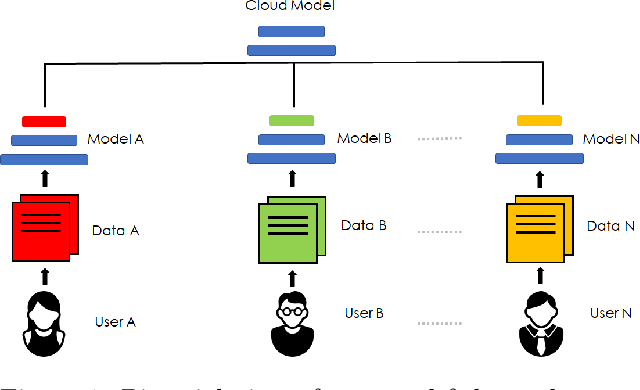
I. Introduction to Federated Learning
II. Incorporating Personalization Layers in Federated Learning
III. Benefits of Personalization Layers in Federated Learning
IV. Challenges and Considerations in Implementing Personalization Layers
Federated learning is an innovative approach to machine learning that is revolutionizing how data is used to train models. In a traditional machine learning setting, all data is collected and stored in a central server for training. However, with federated learning, the training process takes place on decentralized devices, such as smartphones or IoT devices, without the need to upload raw data to a central server.
Imagine your smartphone learning from the collective knowledge of all smartphones in a network, without compromising your privacy. That’s the beauty of federated learning. By leveraging the data available on each device, models can be trained collaboratively, resulting in more accurate and robust algorithms.
This approach is particularly beneficial in scenarios where data privacy is a concern. By keeping data on users’ devices and only sending model updates to the central server, federated learning ensures that sensitive information remains secure. This not only protects user privacy but also boosts confidence in the use of machine learning technologies.
Moreover, federated learning allows for more efficient model training. Instead of relying on a single, large dataset, models can be trained on a diverse range of data sources, leading to more generalized and adaptive algorithms. This is especially useful in applications where data varies across different users or devices, such as personalized recommendations or healthcare analytics.
As federated learning continues to gain traction in various industries, researchers and developers are exploring ways to enhance its capabilities. One exciting development is the incorporation of personalization layers in federated learning.
By adding personalization layers to federated learning models, developers can tailor the training process to individual users or devices. This means that models can adapt to the unique characteristics and preferences of each user, resulting in more personalized and relevant predictions.
Personalization layers can be implemented in various ways, such as incorporating user feedback into the training process or fine-tuning models based on individual interactions. By customizing the learning experience for each user, developers can improve the accuracy and performance of federated learning models.
Incorporating personalization layers in federated learning opens up new opportunities for enhancing user experiences and driving innovation in machine learning applications. Whether it’s delivering personalized recommendations, optimizing user interfaces, or improving predictive analytics, personalization layers can help unlock the full potential of federated learning.
As the field of federated learning continues to evolve, it’s crucial for developers to stay informed about the latest advancements and best practices. By keeping up-to-date with the latest research and techniques, developers can leverage personalization layers to create more effective and impactful machine learning solutions.
In the next sections, we will explore the benefits of personalization layers in federated learning, as well as the challenges and considerations that developers need to keep in mind when implementing this innovative approach. Stay tuned for more insights and tips on how to maximize the potential of federated learning with personalization layers.
Incorporating Personalization Layers in Federated Learning
Hey there! Ready to dive into the exciting world of federated learning? Great! Let’s talk about how we can kick things up a notch by incorporating personalization layers into this innovative process.
So, what exactly are personalization layers in federated learning? Well, think of them as customized filters that help tailor the machine learning model to individual preferences and behaviors. By adding these layers, we can enhance the accuracy and relevance of the model, ultimately improving the user experience.
Personalization layers allow us to capture unique patterns and trends in data, making the model more adept at predicting outcomes and making recommendations. This level of customization can lead to better engagement, increased satisfaction, and ultimately, improved results.
Now, you might be wondering how to go about incorporating these personalization layers into your federated learning process. It’s actually quite simple! By leveraging user data such as browsing history, purchase behavior, and preferences, you can create personalized profiles for each individual. These profiles can then be used to fine-tune the machine learning model and deliver tailored recommendations.
Remember, the key to successful personalization lies in striking a balance between data privacy and personalized experiences. It’s crucial to ensure that user data is handled responsibly and ethically, while still providing value through personalized recommendations.
So, why should you bother with personalization layers in federated learning? Well, the benefits are truly worth it. By tailoring the model to individual preferences, you can boost engagement, drive conversions, and foster customer loyalty. In a world where competition is fierce, personalized experiences can set you apart from the crowd.
In conclusion, incorporating personalization layers into federated learning can take your machine learning efforts to the next level. By leveraging user data and customizing the model, you can deliver more accurate predictions, drive better outcomes, and ultimately, enhance the overall user experience. So, why wait? Dive in and start personalizing your federated learning process today!
Benefits of Personalization Layers in Federated Learning
Hey there! Ready to dive into the world of personalization layers in federated learning? Let’s get started on exploring the amazing benefits that come with incorporating these layers into your machine learning models.
- Increased Accuracy: Personalization layers allow for the customization of models based on individual user data, leading to more accurate predictions and recommendations. By tailoring the model to the specific needs and preferences of each user, you can significantly improve the overall performance of your machine learning system.
- Enhanced User Experience: By providing personalized recommendations and predictions, you can create a more engaging and satisfying user experience. Users are more likely to engage with a system that understands their unique preferences and delivers content that is relevant to them. This can lead to increased user satisfaction and retention.
- Improved Efficiency: Personalization layers can help streamline the learning process by focusing on relevant data for each user. By only using data that is specific to an individual, you can reduce the amount of unnecessary information that the model needs to process. This can result in faster training times and more efficient use of computational resources.
- Better Data Privacy: With personalization layers, user data is kept separate and only used for training the individual model. This means that sensitive information is not shared across the network, reducing privacy concerns and ensuring that user data remains secure. By prioritizing data privacy, you can build trust with your users and protect their personal information.
- Adaptability to User Preferences: Personalization layers enable the model to adapt to changing user preferences over time. By continuously updating the model based on new data, you can ensure that recommendations and predictions remain relevant and up-to-date. This flexibility allows the system to evolve with the user, providing a more personalized and dynamic experience.
As you can see, incorporating personalization layers in federated learning can offer a wide range of benefits that can enhance the performance, user experience, and privacy of your machine learning system. By leveraging the power of personalized models, you can create more accurate predictions, improve user engagement, and build trust with your audience. So why wait? Start exploring the exciting world of personalization layers today and take your machine learning projects to the next level!
Challenges and Considerations in Implementing Personalization Layers
Implementing personalization layers in federated learning can offer numerous benefits, but it also comes with its fair share of challenges and considerations. As you venture into incorporating personalized features into your federated learning model, it’s essential to be aware of potential roadblocks and plan accordingly to ensure successful implementation. Let’s delve into some key challenges and considerations you may encounter along the way.
1. Data Privacy and Security
When adding personalization layers to your federated learning model, you are dealing with sensitive user data. It’s crucial to prioritize data privacy and security to maintain trust with your users. Implement robust encryption techniques, secure data transmission protocols, and strict access controls to safeguard personal information. Remember, protecting user privacy should always be a top priority.
2. Model Overfitting
Personalization layers can increase the risk of model overfitting, where the model performs well on training data but poorly on unseen data. To mitigate this risk, regularly validate your model on new data and consider implementing techniques like regularization and cross-validation to prevent overfitting. Keep your model generalizable and adaptable to different user preferences.
3. Scalability and Performance
As you introduce personalization layers, scalability and performance become critical factors to consider. Ensure that your federated learning system can handle the increased computational load of personalized models while maintaining efficiency. Optimize your infrastructure, allocate resources effectively, and monitor performance metrics to guarantee smooth operation at scale.
4. Bias and Fairness
Personalization can inadvertently introduce bias into your model, leading to unfair outcomes for certain user groups. Be vigilant in detecting and mitigating bias by diversifying your training data, auditing model decisions, and incorporating fairness constraints into your algorithms. Strive for inclusivity and fairness in your personalized recommendations to build trust and credibility with your users.
5. Collaboration and Communication
Effective collaboration and communication are key to successfully implementing personalization layers in federated learning. Foster open dialogue among stakeholders, including data scientists, engineers, and product managers, to align on goals, address challenges, and share insights. Establish transparent processes, facilitate knowledge exchange, and encourage teamwork to drive innovation and achieve shared objectives.
In conclusion, integrating personalization layers into federated learning can unlock new opportunities for enhancing user experiences and driving business growth. By proactively addressing challenges and considerations, you can navigate potential hurdles and maximize the benefits of personalized models. Stay informed, stay vigilant, and stay collaborative as you embark on this exciting journey towards more personalized and impactful machine learning solutions.



Comments